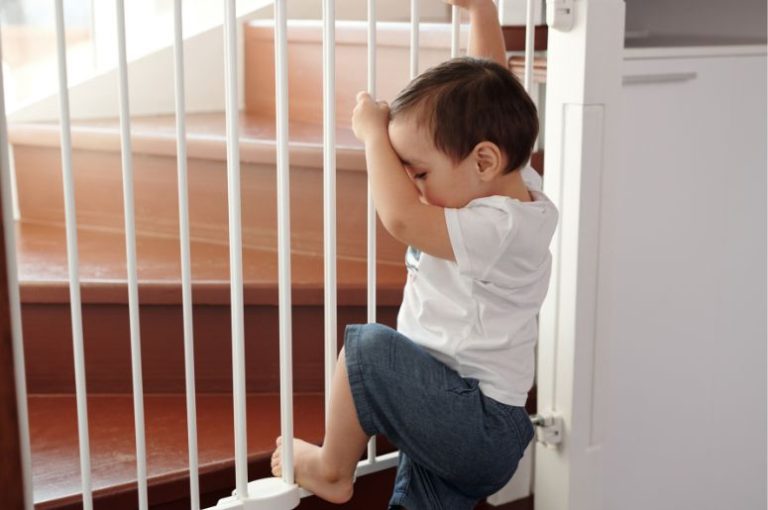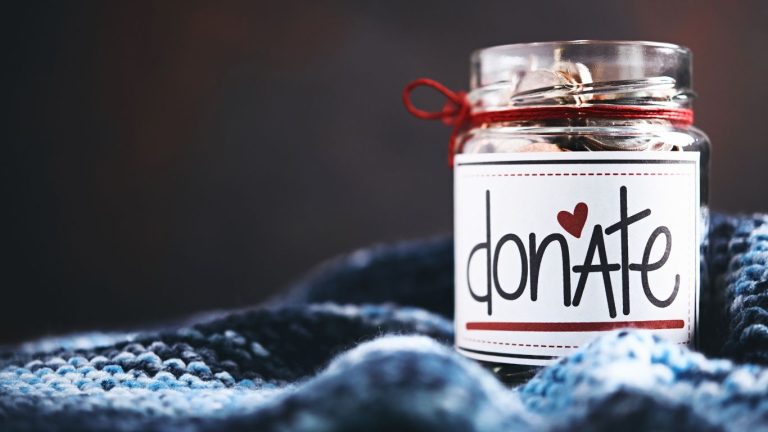Keeping your children safe in and around the home is not about stopping your child from being active and curious, it’s about providing the safest environment to explore in.
Sometimes when you start talking about safety, people will say ‘well you can’t wrap children in cotton wool’ or even ‘they have to learn somehow’. But children, being their natural adventurous selves, still need to be kept safe.
This article will give you all the childproofing tips you need to know to keep your children safe at home.
58 Childproofing Tips for Keeping You Children Safe at Home
In New Zealand we don’t have a great safety record when it comes to childhood accidents. In fact, we have the highest incident rate of driveway deaths in the world.
There are some sobering statistics around child safety; every year 4800 children are injured severely enough in falls that they require hospitalisation and around 330 children are hospitalised with burns! Some of these injuries can cause life-long issues for your child, or worse. Many of these injuries can be prevented.
Facts and Stats on Child Injuries each Year
These statistics are based on New Zealand data. We have around 5 million people in New Zealand. So just multiply the figures below by your countries population to come up with your own countries rough injury rate.
Eg. if you’re from Australia, for instance, just multiply the figures below by 5. Many of these figures will be reflected in most Western countries around the world. For instance, the 1 in 3 injuries happening in the home is common to most countries.
- General: about 25,000 people each year require hospital treatment from an injury that happened in their own home.
- General: 1 in 3 of all injuries in New Zealand happen in the home
- General: 1 in 7 New Zealanders were injured in the home last year
- Motor Vehicle – Deaths: an average of 16 children, aged 0 – 14 years, die each year as a passenger in a motor vehicle — the single largest cause of child injury deaths — with 38% being preschoolers.
- Motor Vehicle – Injury: an average of 279 children, aged 0 – 14 years, are admitted to hospital each year with injuries sustained as a motor vehicle passenger, of which 25% are aged 0 – 4 years.
- Child pedestrians: For children aged 5-9, motor vehicle traffic crashes where the child is a pedestrian are the leading cause of injuries resulting in death.
- Falls account for more than half of all injury related hospital admissions for children aged 0 – 14 years.
- Falls: children aged 0 – 4 years are most commonly seriously injured by falling from one level to another (eg. down stairs, off furniture, out of windows, off balconies, off playground equipment, and whilst being carried by someone)
- Drowning is NZ’s 3rd highest cause of accidental death, with an average 109 total drownings in NZ each year — 8% are aged 0 – 4 years
- Drowning: primary situations of drownings of children aged 0 – 4 years are: 42% “home pools” and 28% “domestic” (i.e. household bath, bucket)
- Poisoning: of the average 366 hospitalizations per year due to unintentional poisoning of children under 15 years, 80% are aged 0 – 4 years. Children aged 1, 2, and 3 years are by far the most at risk.
- Poisoning: drugs and medications represent 67% of the poisoning agents causing child hospitalisation.
- Burns: Hot drinks are the #1 cause (and excessively hot water in baths, showers, sinks are the #2 cause) of burn injuries and hospitalisations among children under 5 years old.
- Fire: an average of 5 children, aged under 10 years, die each year from fire or flame — caused primarily by unattended heaters, or a child playing with matches, candles or lighters.
- Cutting Injuries: over 100 children, aged 0 – 4 years, are admitted to hospital overnight each year with cutting or puncture injuries — over 50% are foot injuries after standing on something sharp.
- Missing Kids: Around 4,000 children (aged under 18 years) are reported missing to NZ Police each year.
42 Quick Child Safety Ideas and Tips for Around the Home
Check our list of ideas and tips to minimise the risks in a variety of different situations for your child in and around the home. You can go through this list as a checklist while walking around your own home to try and identify any problem areas. Then you can try and childproof your home using the tips below.
Safety Tips for the Kitchen
- Keep the floor dry
- Afix toddler-proof locks to low drawers and cupboards, especially for cutlery
- Keep electrical cords away from edge of bench
- Turn pot handles toward the stove rear
- Keep sharp knives, scissors and sharp utensils stored high or at back of bench in a knife block or magnetic strip.
- Put safety plugs in all electrical sockets to prevent burns and electrocution.
Safety Tips for the Bathroom
- Give bath toys only after child is safely seated in the bath
- Use non-slip mats on bathroom (and shower) floor
- Install child-resistant tap attachments; readily fitted to most standard taps.
- Use non-slip mat in bath
- Supervise young children in the bath at all times
- Keep all medicines, pills, ointments and aromatherapy oils out of reach and out of sight of children
Safety Tips for the Lounge/Dining
- Fit safety catches to low windows to prevent children climbing out.
- Place electrical cords out of the way, preferably taped to skirting boards.
- Place hot liquids in the centre of the table or up high out of the reach of children.
- Secure a fire guard rail around the heater or fireplace.
- Train young children to stay away from heaters and open fires
- At all times supervise young children in a room where a heater or fire is on.
- Observe the “1 metre heater” rule – the heater must be at least one metre away from all furniture and curtains; and children a minimum 1 metre from the heater.
Safety Tips for the Laundry
- Keep all poisons and chemicals, such as laundry detergents, bleaches and cleaners, in their original containers; and keep them out of reach and out of sight of children.
- Never keep chemicals in old drink containers – they may look tempting to children.
- Put buckets or similar water vessels out of reach in a laundry tub or similarly high place. Ensure containers have well-fitting lids, as babies can drown in a very small amount of water.
Safety Tips for the Stairs
- Remove rugs from top and bottom of stairs
- Fix stair gates at both top and bottom of stairs
- Afix a toddler friendly handrail to stairs
Safety Tips for the Around the House
- Paint the edges of steps with white paint mixed with sand to achieve grip
- Ensure your deck has a railing minimum 1 metre high, with vertical rails (to prevent todllers climbing up them)
- Keep the deck (and path) clear of mildew, moss, and excess water.
- Trim hedges and overhanging trees to ensure clear vision along driveway for reversing of car.
- Check that driveway is clear of children and toys before moving your vehicle.
- Keep your pool fence locked at all times
- Supervise your child in a pool at all times
- Teach your toddler & preschooler to wear a broad brimmed hat (covering face, ears, and neck) during the hotter months (perhaps align with older sibling at school during terms 4 & 1).
- Teach your pre-schooler to always wear a cycle helmet when riding a bike — thereby reducing risk of (upper & mid) facial injury by 65%, head injury by 85%, and brain injury by 88%.
- Check that your child’s safety seat is compliant, correcty installed in the car, and always used — thereby reducing the risk of death by 70% for infants and 50% for toddlers.
Safety Tips for the General
- Consider a “child locator” device
- Check the hot water tap temperature — safer at 54oC (est. 10 seconds for serious burn to child ), rather than 60oC (est. 1 – 3 seconds for serious burn to child). — NB. Your water should be 55oC at the tap, but 60oC in your cylinder to stop harmful bacteria growing.
- Teach your preschooler your street address and phone number
- Safely dispose of empty medicine and poison containers
- Ensure your child receives all Tetanus injections (at 6 weeks, 3 months, 5 months, 4 years, and 11 years) as part of the “DtaP-IPV” immunisations.
- Put safety plugs in all electrical sockets to prevent burns and electrocution.
- Get a First Aid kit, familiarise yourself with it, know what to do in different emergency situations.
How to Keep your Baby Safe in and Around the Home
Infants are completely dependent on us to keep them safe. As they are not yet mobile many of the risks come from the environment. Here are 6 safety tips for infants:
- Baby’s cot – Avoid the use of bumper pads which have cords or ties that could become a strangulation risk. Pillows are not needed and can be a suffocation risk. Move your infants cot down to the lower level before they can sit up unaided to prevent them falling out. Check for weight/stages on your bassinet. A good guide is moving baby out of smaller bassinets before they can roll over. Placement of the cot – This should be away from any windows/curtain cords. Have any heavy objects down low and look to see what could fall into your baby’s cot if there was an earthquake. Drawers, bookshelves and televisions should all be clear of the cot. Heavy and tall shelves can be secured to the wall. Once your infant is standing make sure they can’t reach anything that could be a risk such as a lamp or baby monitor with cords. Baby is safest in their own cot, but in the same room as you in the early months. Keep the room warm but not hot ensuring adequate ventilation. Plunket have lots of tips for safe sleeping.
- Bibs – Older style bibs with plastic backings and ties are to be avoided and baby should never be put to bed with a bib on due to smothering. Remove bibs after feeding and look for bibs that easily come away when pulled against.
- Falls and Stairs – Infants can learn to navigate a few stairs safely, often crawling backwards to get down. However any more than a few stairs should be gated off. Other risks for falls come at nappy change time if changing on a changing table or elevated surface, as it just takes you to turn or bend down to get a baby wipe and they can fall. Keeping one hand on the baby at all times and changing on the floor or on a mat rather than a high change table is preferable. Other falls have occurred when infant seats or bouncers have been put on top of table or kitchen benches. Baby’s movement inside the capsule can cause enough momentum for it to move so keep these on the floor.
- What about baby walkers? Both Starship Hospital and Plunket warn against the use of walkers. Why? Walkers place baby in an unnatural position before their body is ready, but more importantly, it means they can reach things and move to areas they wouldn’t be able to without the walker and before they are developmentally ready. Walker accidents have included the walker tipping on uneven surfaces or even falling down steps. Infants have also reached hot drinks and pulled these on top of themselves.
- Water hazards – Even shallow water in pet bowls can be a risk to infants as they can tip in and are unable to ‘right themselves’. When using buckets to soak clothes, use a lid and have these up high and out of reach. Don’t use a baby seat in the bath as it can give adults a false sense of confidence that they can pop out for a minute to grab a towel, wrongly thinking baby is safe. Have everything you need before you fill the bath and empty it before you leave the room with your baby. For under-fives, 40% of drownings happen at home. Baths are the most common cause of drowning in infants under 12 months old (ACC statistics).
- Car seats – Infants grow rapidly so you need to keep an eye out when it comes to adjusting straps or moving them up to the next level. If using an infant capsule keep an eye out on your baby’s height and weight so they are moved into the next car seat at the right stage of development. Adjust the straps so they are firm. Sometimes children wear layered warm clothes and then the straps are not adjusted when thick clothing items are removed. Read the instructions that came with your car seat and have it checked that it is correctly installed. Plunket has trained staff as do some specialised baby shops such as the Baby Factory.
How to Keep your Children Safe in and Around the Home
Toddler Safety around the Home
Toddlers become more mobile and curious so it’s a time to relook at the environment for preventing accidents.
- Power points – Buying power point covers that you just push in to the unused power point is a great solution. These are really cheap and it only takes a few seconds to install. Focus on the power points in their own room, play area and those that are down low but ideally the whole house.
- Burns – There are several risk areas with the bathroom and kitchen being the obvious ones. Check your hot water and lower it to 55oC at the tap and 60oC at your water tank; 40% of New Zealand households have dangerously hot water. About two classrooms of children end up in hospital each year with burns from hot tap water (ACC). Ideally have a gate on your kitchen or use the back elements where possible and keep jugs and cords to the back of the bench.
- Medicines/cleaners – These can look like lollies or soft drinks to children. Keep them in their original container and out of reach, preferably in a locked cupboard. Toilet cleaner is a common one that is left out in the bathroom so put this away each time. Another high risk item is dishwashing powder which is highly caustic and is often left on the kitchen bench. Remember that caps are only child resistant (often they seem adult resistant too!) so don’t rely on them being childproof. Think about medicines that are in your purse such as Panadol that could be a risk to children.
- Driveways – New Zealand has one of the highest recorded incidences of child driveway deaths and injury in the world. On average, five children a year are killed by cars driving on private driveways in New Zealand. Within the Auckland region at least one child every two weeks is hospitalised overnight with injuries from this cause (Safe Kids NZ). Tragically it is commonly the child’s own parent as the driver. Where possible, fence the driveway so it is separate from the play area. If you are alone and need to move a car it is safest to put the child in the car with you. Check, check and check again before moving. Where possible have another adult hold the child’s hands as you are leaving as children can get excited and move quickly especially if they wanted to go in the car or are excited about a visitor arriving.
- Choking – Prevention is always best so start a good habit of sitting while eating right from the beginning. Avoid small hard food such as nuts, boiled sweets and chewing gum. Cut circular food in lengthways such as sausages or grapes. Batteries in toys and remotes are a real hazard not just for choking but for causing internal damage too.
School Age Children Safety around the Home
Pre-schoolers are starting to become aware of their own safety but still need careful supervision. They can be involved in their own safety such as taking part in a family fire drill.
- Water – Pre-schoolers still need to be supervised around water. When my daughter was four she slipped while walking across the hot pool while on holiday and I was astonished to see that she just stayed there like a starfish. No splashing or kicking. That’s why they say drowning is silent. Thank goodness I was in the pool with her and could grab her almost immediately. When I pulled her up she then gasped and cried. Articles explain that children can go to scream when they go under the water which means they swallow water. Also they become disorientated so they don’t stand up. Humans have an instinctive fight, flight or freeze when there is danger so sometimes the body freezes. Water Safety warns children should still be supervised at bath time and within arm’s reach when in the water.
- Falls – around 3,900 children are hospitalised each year from falls in New Zealand (Safe Kids). School aged children are being more adventurous and this needs to be managed and provided for to reduce risk. Children who have opportunities to climb, such as on playground equipment, supervised, are less likely to seek out their own climbing which could be on shelving or tables at home. Let your child climb on challenging play equipment at the park with you assessing what is suitable for their age. Add challenge as their skills grow, so start with the smaller ladders and build up to bigger slides and climbing frames as their skills progress. At home you can look at window locks if you have a two story home so windows only open a certain gap. Did you know that Starship Safe Kids don’t recommend the top bunk beds for children under 9 years of age?
- Fire safety – Many families I visit say “oh they know to stay away from the fire” although you have told them and they may be able to repeat the rule children are unpredictable. Also children can trip and fall against a heater or fire while walking or playing nearby. Using a guard reduces the chance of burns or clothes catching on fire. Keep matches and lighters away from children. They may ‘know’ they shouldn’t touch but it’s too irresistible to them. Visit the Fire Service website for free resources and a printable escape plan as part of the Fire Wise programme.
- Poisons and medications – Pre-schoolers and young school children can still confuse medication with sweets or be curious to try the unknown so these should still be out of reach. Ask for child resistant caps when you get any prescriptions. 80% of children poisoned are under the age of five; the most common culprits being medication and drugs followed by household cleaners.
- Trampolines and bikes – Trampoline injuries are high on ACC claims for children and for hospital admissions. Ideally buy the safest trampoline you can afford. Place it so there is a large clear space around the trampoline. Have a rule of only one child at a time. With both bikes and scooters, helmets that fit snugly should be worn every time. Avoid riding in jandals or bare feet. Make sure the scooter and bike is the right size for your child.





